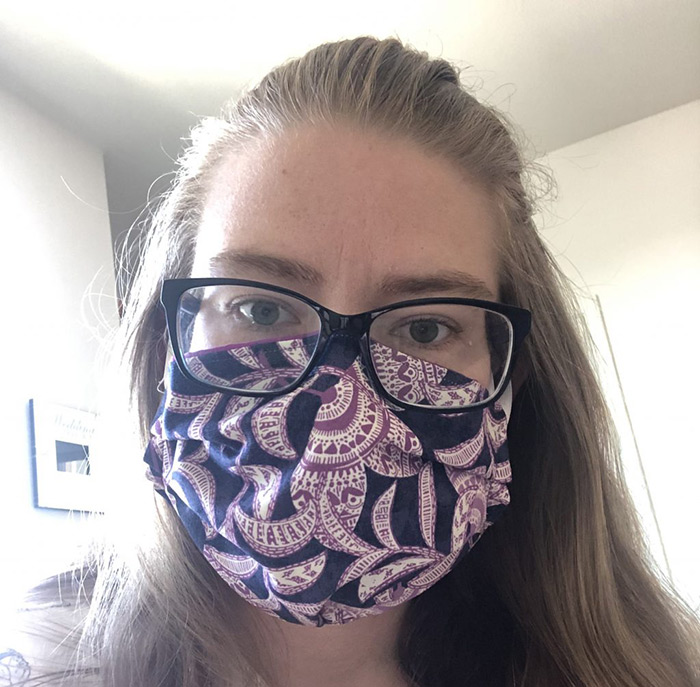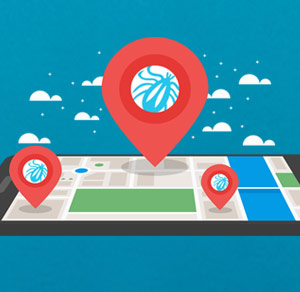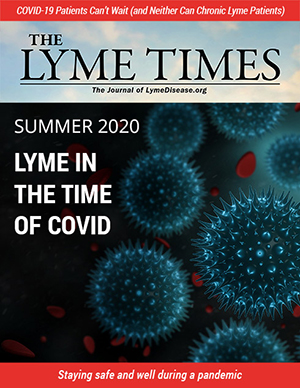W e are living in unprecedented times. Not a day goes by that we don’t hear something new about the COVID pandemic. Much of it contradictory. This virus is so new that scientists are scrambling to find answers.
Like so many of you this year, as spring was approaching, I assumed the biggest thing I’d have to worry about was ticks. Boy, was I wrong.
When word of the novel coronavirus spreading to the U.S. hit the news, I became concerned for my daughter, who has been immunocompromised since the beginning of her illness in 2012. So, as I am wont to do, I started researching. Here is what I learned.
What Is COVID-19?
The first human coronavirus was discovered in the 1960s as one of the causes of the common cold. There are hundreds of other viruses linked to upper respiratory infections, including rhinoviruses and flu viruses.
 The current coronavirus, named SARS-CoV-2, causes coronavirus disease 2019, which is abbreviated as COVID-19. At its worst, COVID-19 can cause pneumonia in both lungs, multi-organ failure, stroke, and, in some cases, death.
The current coronavirus, named SARS-CoV-2, causes coronavirus disease 2019, which is abbreviated as COVID-19. At its worst, COVID-19 can cause pneumonia in both lungs, multi-organ failure, stroke, and, in some cases, death.
Anyone who interacts with others is at risk for catching this coronavirus. And like with the flu, certain people are at a higher risk for developing severe illness.
According to a research team led by the National Institutes of Health, SARS-Cov-2 can remain infectious for several hours in aerosols (liquid droplets floating in the air after an infected person coughs or sneezes). It can stay infectious much longer than that on cardboard, plastic, hard surfaces, or stainless steel.
Furthermore, roughly half of the people with COVID-19 will show no or mild symptoms. These people, as they go through their daily lives, touching things and other people, can unknowingly pass on the infection.
How to Protect Yourself from Viruses

Because of my daughter’s illness, we’ve made it a habit to practice strict hygiene in our household. If you or your child are immunocompromised, or you simply want to protect yourself from the common cold and other viruses, you may want to adopt a few of my flu season protection tips.
- Wash your hands frequently. We’ve heard this again and again, but I cannot stress the importance of this enough. Proper handwashing involves scrubbing with soap for a full 20 seconds and turning off the faucet with a paper towel. A simple way to time yourself is to sing “Happy Birthday” twice. (But sing it silently to keep from getting awkward stares from others!) And remember, hand sanitizer works most effectively if you rub your hands together until they are completely air dry.
- Avoid sick people. First and foremost, stay away from anyone showing signs of sickness—runny nose, coughing, sneezing, fever, or cold- or flu-like illness. Imagine you are protecting a newborn baby. Likewise, if you are showing signs of illness, stay home. If you live with someone who is sick, they should be isolated and required to wear a mask at all times. Imagine everything the sick person breaths on or touches has glitter on it. The key is for you to avoid breathing glitter or getting glitter on your hands or face.
- Start every day with a clean slate. Wipe everything in the kitchen: counters, refrigerator handle, all doorknobs, light switches, faucet handles … essentially everything someone may have touched with dirty hands. This rule also applies to hotel rooms (the phone, TV remote, doorknobs, etc.).
- Keep germs out of the house. Never place mail, boxes, or purses on counters where food is prepared or served. Place grocery bags on the floor and clean food as you put it away. I have a TV table at my front door with cleaning supplies and a sign reminding everyone, prior to entering my house, to please:
- spray shoes,
- wipe cell phone, and
- clean hands.
- Protect yourself in public. Keep a bottle of hand sanitizer in your purse, pocket, or backpack and car at all times. Wash your hands before you eat or touch your face. Use hand sanitizer after pumping gas or touching anything the public touches (doorknobs, handrails, pens, credit card terminals, etc.). Wear a face mask if you must enter a crowded space or use public transportation during a pandemic. (Some locations mandate face masks any time you are in public.)
- Protect yourself at work. At the beginning of every workday, you will want to clean everything you touch to reduce or eliminate as many of the microbes as you can (doorknobs, phone receiver, number pad, keyboard, mouse, light switches, pens, pencils, calculator, etc.). If possible, ask others not to use your workstation. Some jobs may require you to wear a mask, especially if you work in a space that is frequented by the public (a grocery store, medical facility, restaurant, etc.).
- Take extra precautions if you are immunocompromised or vulnerable. Carry hand sanitizer, disinfecting wipes, disposable gloves, and masks everywhere you go. Wash your hands frequently. If you can’t remember if you washed your hands, wash them again. Enforce a strict “no visitors” rule for anyone who has a fever, cough, sneeze, or runny nose or who has been exposed to someone else who is sick. You want all visitors to be symptom-free for at least 24 hours (preferably longer) without using cold, flu, or fever-reducing medications.
How to Prepare for a Crisis
California has its share of disasters, so I’m kind of used to preparing for emergencies. During fire season, we keep an evacuation plan taped to the fridge. And because earthquakes happen occasionally, we always have a three-day supply of water and non-perishable foods.
Earlier this year, knowing that COVID-19 was coming, I prepared for my family to hunker down.
Here are the steps we took:
- Order a three-month supply of prescription medications.
- Stock up on two to three weeks’ worth of dried and non-perishable foods (rice, pasta, beans, nuts, and canned or frozen veggies, fruit, and meat).
- Replenish household and cleaning supplies, pet food, batteries, etc.
- Replenish emergency supplies (fever reducers, antihistamines, Band-Aids, masks, gloves, rubbing alcohol, etc.). Make sure you have a thermometer and a pulse oximeter.
Create a plan of action in case any family member becomes ill:
- Who will take care of that person?
- Who will take care of their kids and/or pets?
- Who will shop for food, prepare meals, clean, etc.?
- Have an emergency contact list that includes numbers for your doctor, personal emergency contacts, emergency services, the public health department, etc.
Finding the Silver Linings
Along with hardships, a crisis can also bring silver linings. We will see new policies and learn new strategies for dealing with pandemics. Parallels are being drawn about how the CDC’s initial test for COVID-19 failed and how the test for Lyme disease continues to fail. Maybe knowledge gleaned from COVID research into COVID testing will ultimately benefit Lyme disease research?
Maybe people have become more aware of the emotional pain and frustration felt by those who have disabilities or chronic illness, like Lyme disease, and are stuck at home for months to years.
Here’s how some people are making use of their quiet times. Mitch Hoggard, a pharmacist by training, treasurer, and board member of LymeDisease.org, has taken advantage of newly acquired solitude by looking for subjects and good composition for taking photographs in nature.
Mitch told me, “During these trying times, we have so much to be thankful for. As is often said, stop to smell the roses. Attitude isn’t everything, but it certainly plays a huge role in how we live our lives. We can stay home and complain, or we can find beauty.”
Here is a sampling of Mitch’s spectacular photography.

Learning how to use technology to stay connected during tough times has benefited all of us. Moreover, accommodations for telemedicine and for more people working from home will be good for the environment in the long run.
As Dorothy Leland wrote in her Touched by Lyme blog, “Yes, in the interest of everybody’s health, we need to sequester ourselves in the coming weeks. But we must do our best to stay socially connected with our families, neighbors, and larger communities. We need each other more than ever in such trying circumstances! Luckily, social media and other technologies help us do that. Personally, I’m making a special effort to keep in touch with my tribe using the best “remote” tools for the job—phone calls, text, Facebook, email, etc.”
Renewed Focus on Health
If nothing else comes from this pandemic, people have become acutely aware of how important handwashing is for their health.
 I hope the need for wearing masks in public comes to an end soon. However I think cleaning our cell phones, wiping the shopping cart handles, and generally increasing our cleanliness will have a positive effect come next flu season. And, hopefully, we will all think twice about what we’ve been exposed to and take extra precautions before visiting our elderly friends and relatives.
I hope the need for wearing masks in public comes to an end soon. However I think cleaning our cell phones, wiping the shopping cart handles, and generally increasing our cleanliness will have a positive effect come next flu season. And, hopefully, we will all think twice about what we’ve been exposed to and take extra precautions before visiting our elderly friends and relatives.
I see it as a good sign that the FDA is fast-tracking clinical treatment trials, allowing off-label use of medications, and granting emergency use for newly developed tests for COVID-19. We can only hope this type of urgency and innovation will continue and also be employed for tick-borne diseases.
And maybe, just maybe, people have become more aware of the emotional pain and frustration felt by those who have disabilities or chronic illness, like Lyme disease, and are stuck at home for months to years.
Now, wouldn’t that be a wonderful silver lining for the Lyme community?
Editor’s note: Any medical information included is based on a personal experience. For questions or concerns regarding health, please consult a doctor or medical professional.




























